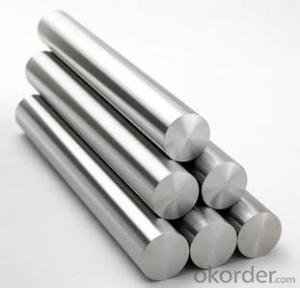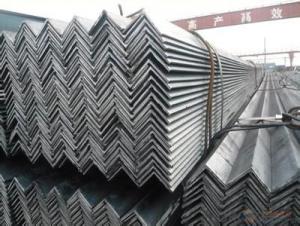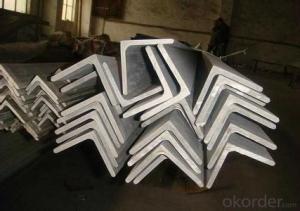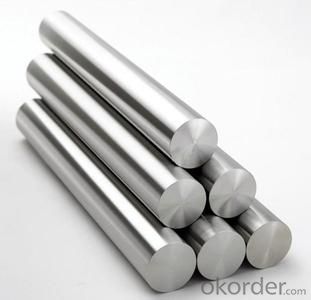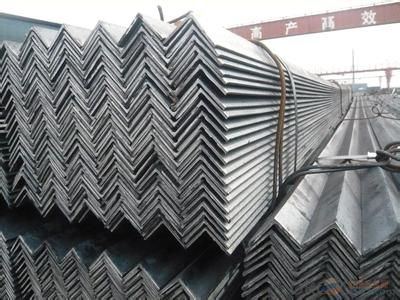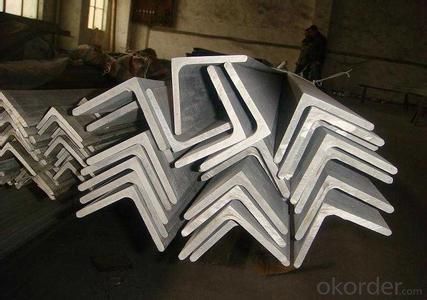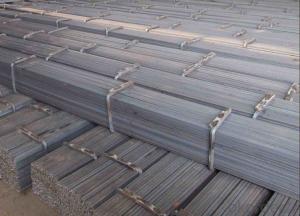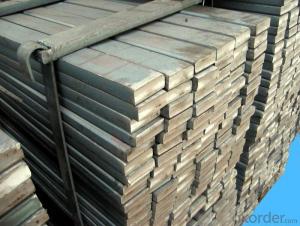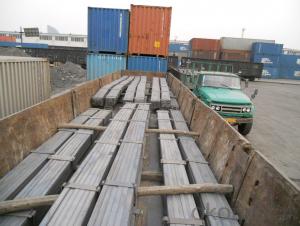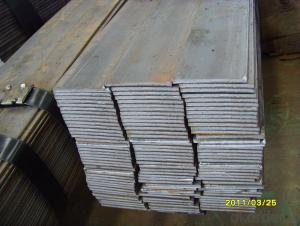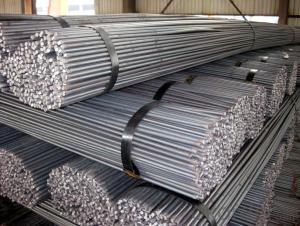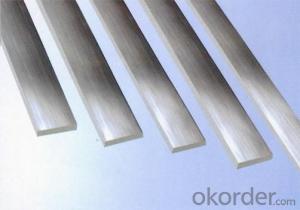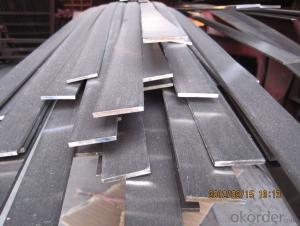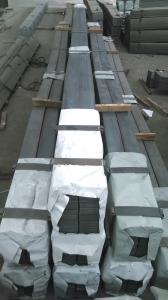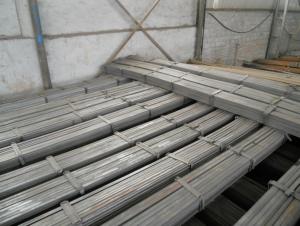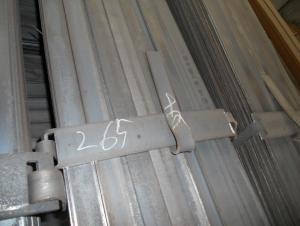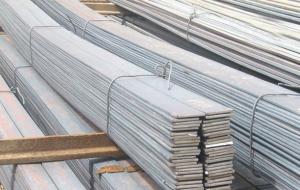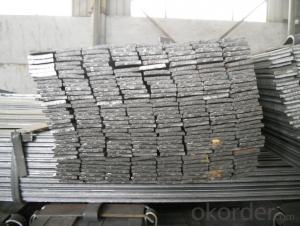Flat Bar 3mm-30mm Hot Rolled High Quality GB Q235
- Loading Port:
- China Main Port
- Payment Terms:
- TT or LC
- Min Order Qty:
- 25 m.t.
- Supply Capability:
- -
OKorder Service Pledge
OKorder Financial Service
You Might Also Like
Product Description:
OKorder is offering high quality Hot Rolled Steel I-Beams at great prices with worldwide shipping. Our supplier is a world-class manufacturer of steel, with our products utilized the world over. OKorder annually supplies products to European, North American and Asian markets. We provide quotations within 24 hours of receiving an inquiry and guarantee competitive prices.
Product Applications:
According to the needs of different structures, Angle can compose to different force support component, and also can be the connections between components. It is widely used in various building structures and engineering structures such as roof beams, bridges, transmission towers, hoisting machinery and transport machinery, ships, industrial furnaces, reaction tower, container frame and warehouse etc
Product Advantages:
OKorder's Steel I-Beams are durable, strong, and resist corrosion.
Main Product Features:
· Premium quality
· Prompt delivery & seaworthy packing (30 days after receiving deposit)
· Corrosion resistance
· Can be recycled and reused
· Mill test certification
· Professional Service
· Competitive pricing
Product Specifications:
Manufacture: Hot rolled
Grade: Q195 – 235
Certificates: ISO, SGS, BV, CIQ
Length: 6m – 12m, as per customer request
Packaging: Export packing, nude packing, bundled
Sizes: 25mm-250mm | ||||||||||||
a*t | ||||||||||||
25*2.5-4.0 | 70*6.0-9.0 | 130*9.0-15 | ||||||||||
30*2.5-6.6 | 75*6.0-9.0 | 140*10-14 | ||||||||||
36*3.0-5.0 | 80*5.0-10 | 150*10-20 | ||||||||||
38*2.3-6.0 | 90*7.0-10 | 160*10-16 | ||||||||||
40*3.0-5.0 | 100*6.0-12 | 175*12-15 | ||||||||||
45*4.0-6.0 | 110*8.0-10 | 180*12-18 | ||||||||||
50*4.0-6.0 | 120*6.0-15 | 200*14-25 | ||||||||||
60*4.0-8.0 | 125*8.0-14 | 250*25 | ||||||||||
FAQ:
Q1: How do we guarantee the quality of our products?
A1: We have established an advanced quality management system which conducts strict quality tests at every step, from raw materials to the final product. At the same time, we provide extensive follow-up service assurances as required.
Q2: What makes stainless steel stainless?
A2: Stainless steel must contain at least 10.5 % chromium. It is this element that reacts with the oxygen in the air to form a complex chrome-oxide surface layer that is invisible but strong enough to prevent further oxygen from "staining" (rusting) the surface. Higher levels of chromium and the addition of other alloying elements such as nickel and molybdenum enhance this surface layer and improve the corrosion resistance of the stainless material.
Q3: Can stainless steel rust?
A3: Stainless does not "rust" as you think of regular steel rusting with a red oxide on the surface that flakes off. If you see red rust it is probably due to some iron particles that have contaminated the surface of the stainless steel and it is these iron particles that are rusting. Look at the source of the rusting and see if you can remove it from the surface.
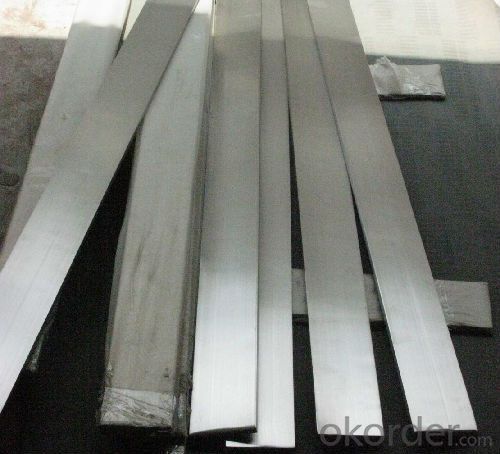
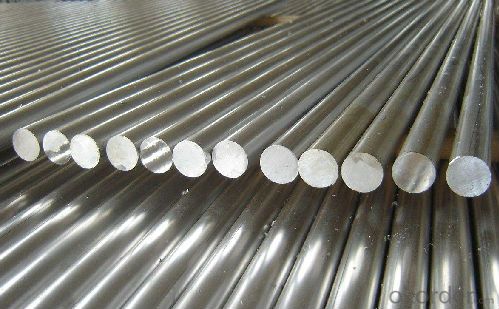
- Q: How do you determine the fracture toughness of a steel flat bar?
- To determine the fracture toughness of a steel flat bar, various standardized tests can be conducted. The most common test method is the Charpy V-notch (CVN) test, where a notched sample is subjected to impact loading and the amount of energy required to fracture the sample is measured. Another method is the compact tension (CT) test, which involves applying a controlled load to a pre-cracked sample and measuring the crack growth resistance. These tests provide valuable data on the toughness and resistance of the steel to fracture, enabling engineers to assess its suitability for specific applications.
- Q: Can steel flat bars be used for manufacturing storage racks?
- Yes, steel flat bars can be used for manufacturing storage racks. Steel flat bars are known for their strength and durability, making them an excellent choice for constructing storage racks that need to support heavy loads. The flat shape of the bars also provides a stable surface for storing various items. Additionally, steel flat bars can be easily welded or bolted together to create the desired rack configuration, making them versatile and customizable for different storage needs.
- Q: What are the different types of coatings available for steel flat bars?
- Steel flat bars can be coated with various types of coatings, each with their own unique advantages and properties. Some common options include galvanized coatings, powder coatings, epoxy coatings, paint coatings, anodizing, and phosphate coatings. Galvanized coatings are widely used and involve applying a layer of zinc to the steel surface. This provides excellent resistance to corrosion and makes them suitable for outdoor applications. Powder coatings, on the other hand, involve applying a dry powder that is then cured under heat to form a protective layer. This type of coating offers durability, resistance to chipping, and a wide range of color options. It is often used for decorative purposes or when a durable and aesthetic finish is desired. Epoxy coatings are popular for steel flat bars that will be exposed to corrosive environments. They are applied as a liquid and then cured to form a hard, protective layer. Epoxy coatings provide excellent chemical resistance and can withstand exposure to acids, alkalis, and other corrosive substances. Paint coatings are a versatile option, offering both protection and aesthetics. They can be applied in various colors and finishes, providing a decorative and protective layer. However, periodic maintenance and touch-ups may be required to maintain their effectiveness. Anodizing is primarily used for aluminum but can also be applied to steel flat bars. It involves creating an oxide layer on the surface of the metal, enhancing its corrosion resistance and providing an attractive finish. Anodized coatings are particularly suitable for architectural and decorative applications. Phosphate coatings are a type of conversion coating that chemically reacts with the steel surface to form a protective layer. They offer excellent adhesion, corrosion resistance, and improved paint adhesion. Phosphate coatings are commonly used as a pre-treatment before applying paint or powder coatings. In conclusion, the choice of coating for steel flat bars depends on specific requirements such as corrosion resistance, durability, aesthetics, and environmental conditions. The available options include galvanized coatings, powder coatings, epoxy coatings, paint coatings, anodizing, and phosphate coatings.
- Q: Can steel flat bars be used for creating supports or brackets?
- Indeed, supports or brackets can be fashioned using steel flat bars. Due to their robustness and longevity, steel flat bars are frequently employed to bear substantial weights or ensure structural steadiness. Custom brackets or supports for an array of purposes, including shelves, furniture, machinery, or construction undertakings, can be effortlessly crafted or welded using them. The availability of steel flat bars in various sizes and thicknesses further enhances their adaptability in design and application.
- Q: Can steel flat bars be used in the manufacturing of furniture?
- Yes, steel flat bars can be used in the manufacturing of furniture. Steel flat bars provide strength and stability, making them suitable for constructing frames, legs, and supports in furniture. They are commonly used in modern and industrial-style furniture designs.
- Q: Are steel flat bars commonly used in the construction of transportation facilities?
- Yes, steel flat bars are commonly used in the construction of transportation facilities. They are often used for various structural applications such as building frames, supports, and railings due to their high strength and durability. Additionally, steel flat bars offer ease of fabrication and can be easily welded or bolted together, making them a popular choice in transportation infrastructure projects.
- Q: What are the standard tolerances for steel flat bars?
- The standard tolerances for steel flat bars can vary depending on the specific industry and application. However, in general, the standard tolerances for steel flat bars typically include dimensional tolerances for thickness, width, and length. For thickness, the standard tolerance is usually within a range specified by the manufacturer or industry standards. This tolerance allows for slight variations in the thickness of the flat bars, ensuring that they meet the required specifications without being too far off. Similarly, the standard tolerance for width specifies the acceptable range for the width of the flat bars. This tolerance accounts for possible variations in manufacturing processes and ensures that the bars are within the desired width specifications. The standard tolerance for length typically allows for a certain degree of deviation from the specified length. This tolerance accounts for potential variations in cutting processes and ensures that the flat bars are within an acceptable range of the desired length. It is important to note that the specific tolerances for steel flat bars can vary depending on the industry, application, and specific requirements. Therefore, it is always recommended to consult the relevant industry standards or manufacturer's specifications for precise information regarding the standard tolerances for steel flat bars in a particular context.
- Q: Can steel flat bars be used for making window frames?
- Yes, steel flat bars can be used for making window frames. They offer strength, durability, and a modern aesthetic that can enhance the overall look and functionality of the window frames.
- Q: Can steel flat bars be used for making automotive parts?
- Yes, steel flat bars can be used for making automotive parts. Steel is a widely used material in the automotive industry due to its strength, durability, and versatility. Steel flat bars are commonly used in the manufacturing of various automotive components such as brackets, frames, supports, and reinforcement parts. They can be easily cut, shaped, and welded into the desired form, making them suitable for a wide range of applications in automotive manufacturing. Additionally, steel flat bars offer excellent resistance to corrosion, which is crucial for automotive parts that are exposed to harsh environmental conditions. Therefore, steel flat bars are a reliable and cost-effective choice for making automotive parts.
- Q: Can steel flat bars be used for manufacturing tools?
- Yes, steel flat bars can be used for manufacturing tools. Steel is known for its strength and durability, making it an ideal material for tool production. Steel flat bars can be easily shaped and machined to create various types of tools, such as wrenches, chisels, and scrapers. Additionally, steel's resistance to wear and corrosion ensures that the tools made from steel flat bars will have a longer lifespan and maintain their effectiveness over time.
Send your message to us
Flat Bar 3mm-30mm Hot Rolled High Quality GB Q235
- Loading Port:
- China Main Port
- Payment Terms:
- TT or LC
- Min Order Qty:
- 25 m.t.
- Supply Capability:
- -
OKorder Service Pledge
OKorder Financial Service
Similar products
Hot products
Hot Searches
Related keywords
